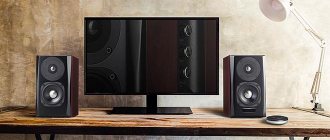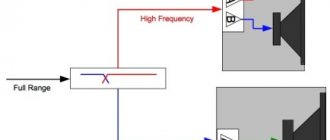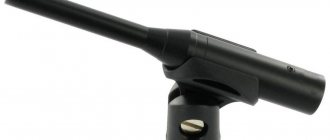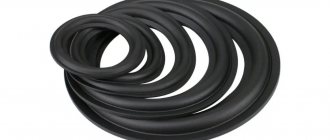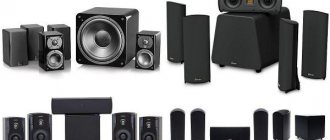Modern people love to listen to music in their free time, at home, on vacation, on the road, and wherever there is such an opportunity. Many sound-reproducing devices have been created for these purposes. Today, speakers, which are essentially a kind of acoustic systems of different bands, are popular among buyers. The most popular niche in the market is occupied by two-way and three-way speaker systems (AS). It is about them, their differences, advantages and disadvantages, as well as technical characteristics that will be discussed in our material.
Speaker Bandwidth
Acoustic devices presented on the domestic market differ in their scope of application: for musical instruments, studio devices, for television, home theaters, and automobiles. All listed speakers differ in technical characteristics and other consumer qualities.
Thus, the most important technical parameters of any type of acoustics include banding. Not all buyers understand what this term is, so it is logical to give a brief explanation. Bandwidth indicates the width of the range and the number of speakers used to separate frequencies in acoustics . According to this definition, the main classification of devices is built into:
- single-way - these are systems where the entire frequency range of 20-20000 Hz is reproduced by one speaker;
- 2-way speakers are speakers with two separate speakers: the first one is for reproducing the upper frequency range, the second one is for low and middle frequency registers;
- 3-way - this equipment uses separate speakers to reproduce low, mid and high sound registers;
- broadband - such speakers include more than 3 speakers and are used in expensive equipment of modern cars, at concert venues, and in studio equipment.
On a note! The most popular in most applications are two-way and three-way speaker systems. This equipment produces excellent sound quality and is widely available in an affordable price segment.
What it is?
First, it’s worth deciding on the terminology, since definitions such as “speaker”, “speaker”, and also “speaker system” are used at random these days by many, thereby creating a lot of confusion.
So, a loudspeaker is a device designed to radiate sound waves into the surrounding space as efficiently as possible. It must contain a loudspeaker itself, an acoustic design option, as well as the electrical elements necessary to maintain the functionality of the system (regulators, filters, etc.).
The definition of “speaker system” is often applied to a set of Hi-Fi and Hi-End loudspeakers. It consists of the following elements:
- loudspeaker heads - they can be in a single copy or in a set, each of them operates in its own individual frequency range;
- hard case;
- filtering and correction circuits, and in addition, devices necessary to indicate the degree of protection against severe overloads;
- audio cables;
- sound amplifiers for active speakers.
These devices are included in the set of tape recorders, music centers and electrophones, and are installed as part of the sound-reproducing equipment in concert halls and cinemas.
Differences between 2-way and 3-way speaker systems
Wideband acoustics operate according to the following sound reproduction scheme:
- a special crossover filter selects low, mid and high frequencies for each speaker: crossover frequencies for low, mid and high frequencies are 20-150 Hz, 100-7000 Hz and 5-20000 Hz, respectively;
- HF reproduction is carried out exclusively through the Twitter speaker;
- The task of the subwoofer is to provide high-quality bass sound;
- For midrange sounds, a speaker called a midwoofer is used.
The main difference between two-way acoustics is the absence of a subwoofer. The midwoofer is responsible for the reproduction of bass, as well as mid-frequency sounds. Whereas the counterpart with 3 bands is characterized by a clear frequency separation between the speakers .
By purpose
Single-way speakers are most often made in a portable version and are used to amplify sound on vacation, in nature. Two-way models are also available in a portable version and are used for sound reproduction in most cars. Stationary wired systems of this type for computers are also produced. While three-way speakers are most often stationary devices for listening to music or watching movies on TV or a home theater.
According to technical characteristics
Depending on the technical solutions, audio equipment is divided into active and passive. In active sound sources, each speaker is equipped with a signal amplifier.
On a note! Separate amplifiers are most often equipped with speakers of broadband speaker systems with 3-4 or more bands.
The sound of the speakers depends on the type of speakers used in the specific model of speakers. Thus, sound sources are divided into coaxial and component. The first type of sound system is a single design that includes cross-frequency separation and LF, MF and HF drivers. In this case, sound reproduction is narrowly targeted. Whereas component multi-frequency speakers of a sound system can be located in different places in a room or car, resulting in surround sound.
By price
The issue of cost is also significant when choosing acoustics. It is cheaper to purchase and install 2-way audio equipment. The savings are due to the smaller number of components: two speakers, one cross-filter and a pair of amplifiers (depending on the model). In addition, you can install the system yourself, without involving specialists - just basic knowledge and skills in electrical installation are enough.
To buy a three-way sound system, the buyer will have to spend money not only on a more complex set of equipment, but also on its installation. It is impossible to do without the help of a professional, since installing and configuring such a speaker requires special measuring instruments, as well as an ear for music. Otherwise, you won’t get surround realistic sound after installation.
By other parameters
It should be noted that three or more band sound systems belong to the Hi - Fi . The decoding of the abbreviation High Fidelity in translation means a high level of sound quality, but in practice the resulting audio signal is almost identical to the original.
Wideband acoustics
The most widespread category, about 95% of all people prefer to listen to music through it. This group includes headphones and car audio. Since car audio in most cases is an unfiltered (no phase distortion) midrange/bass speaker with a tweeter added to it.
A common, natural, non-fatiguing sound that unites all wideband acoustics. There is no phase distortion, since there are no filters that rotate it. Due to this, stereo sound is precisely stereophonic. Not a fancy pseudo-stereo kaleidoscope. This is especially pronounced in three-way systems. You can understand how phase distortions are perceived by ear here .
Phase distortion in wideband acoustics occurs only as a result of the physical properties of the speaker itself. At the resonance frequency of all speakers, the phase moves ahead relative to the main signal.
Phase advance at resonance frequency in bass reflex design
This phase advance will depend on the acoustic design. With a bass reflex design, the phase advance will be the greatest. The mass of the moving system is also important - the heavier the “movement”, the greater the phase advance.
Characteristics of 2 and 3-way speaker systems
The range of acoustics popular with the mass consumer differs in design and body material, power supply, sound features, as well as technical characteristics. Among the important parameters related to the technical capabilities and electronic content of speakers of both classes, the following criteria should be noted.
- System power is a parameter responsible for the power component of the sound, as well as for the compatibility of speakers and amplifiers, if any. In rooms up to 20 m2, it is enough to use a device with a power of 70-80 W; for good sound in a room of 20-30 m2, you need speakers with more power - 100 W. For large rooms, halls and streets, devices with a power of 150 W or more are purchased.
- Frequency range. For musical acoustics, the optimal standard is considered to be a supported spread of 20 - 35000 Hz.
- The sensitivity of the speaker membrane is the main indicator of sound volume. The higher the sensitivity, the louder the sound reproduction. However, the quality may be distorted. The optimal value is considered to be 95 dB.
- The amplifier's impedance (aka AC resistance) must be the same level as the speaker to avoid audio distortion.
- The sound quality also depends on the materials of the acoustic body. The best and, accordingly, more expensive are products made in a body made of natural wood. Plastic and aluminum are the materials used for budget models. In the mid-price segment of speakers, MDF is most often used - a material with properties closer to wood, but lower in cost.
How to choose the right speakers for your car radio?
The rated power of the acoustics should be at least one and a half to two times higher than the value specified in the passport for the radio. This is the main requirement for car speakers. The maximum power should not be less than three times the amplifier rating. This is a desirable, but not mandatory, compliance requirement.
Interesting materials:
How to translate the word Lena? How to translate the word lion cubs? How to hyphenate a word on a computer? How to translate the word Narodzheniy? How to transfer a word at night and a snowstorm? How to translate the word night? How to translate the word prutya? How to transfer the word Russia into syllables? How to hyphenate the word nightingales? How to transfer the word telephone?
Advantages and disadvantages of popular speakers
The popular systems with frequency division into 2 and 3 speakers have their advantages and disadvantages, relating not only to sound reproduction. Also taken into account: form factor, complexity of installation and configuration, materials, price and other technical and user criteria.
Pros and cons of a two-speaker system
Two-way speakers are most in demand at the household level due to their many positive qualities. But there is no limit to perfection.
| Positive sides | Negative aspects |
| Compact sizes. | The sound quality is significantly inferior to three-way systems. |
| Affordable price. | |
| Easy to install and configure. | |
| Possibility of self-assembly. | |
| Sound reproduction is of good quality. | |
| Availability of a wide range of models for various purposes of use. |
Pros and cons of 3-way speakers
Three-way speakers are semi-professional level and above, where the highest sound quality is required. These systems are in demand among audiophiles for their advantages. However, the complexity of the equipment also entails disadvantages.
| Positive sides | Negative aspects |
| Volumetric, close to realistic sound. | Difficult to install with a large number of components. |
| Possibility of use in clubs and concert venues. | |
| Flexible adjustment of uniform distribution in the room. | The dimensions are far from compact; sufficient space for placement is required. |
| Functionality. | Higher cost of equipment. |
Peculiarities
Modern acoustic systems can be perfectly suited to any equipment that can be a sound source. It could be a simple TV, computer, smartphone or tablet. Today, manufacturers offer a huge number of different sound systems to choose from - from a small portable speaker powered by a battery to professional equipment that can operate in multi-channel mode.
The right speaker system is not just a large set of speakers that are assembled in a box and somehow connected to a source. In fact, this is a complex engineering product in which not only the dimensions of the speakers are calculated, but also the amount of free space in the box, the direction of the sound flow, the material used in manufacturing and many other factors that ultimately affect the sound quality are taken into account.
Of course, you can make a simple system in a garage from what you have, and it will work and reproduce sound. But its task is not only to “fight silence”, but to play without noise, rattling, imbalance (unevenness) of speakers, sound distortion and other errors that negatively affect the final sound quality.
That is why premium acoustic systems are more expensive than similar-looking systems, but only in the middle and economy class. An inexperienced layman who is not particularly interested in sound quality will, of course, not notice how good devices differ from the simplest ones. But if a person who has high-quality acoustics at his disposal gets used to high-quality sound over a long period of time, then he will be able to instantly distinguish a high-quality system from a cheaper and simpler one.
Advantages
Let us note the most significant advantages of speaker systems over simple speakers that come with TVs, laptops and other devices that support external audio devices:
- good sound quality even at high volume levels;
- the use of a built-in amplifier makes setup easier;
- at a great distance from the speakers there is no loss in power, which makes it possible to successfully use speakers in large rooms;
- active speakers are designed for long-term operation at maximum volume without compromising their resource.
Flaws
Despite all the advantages of such equipment, even it has its disadvantages:
- if the internal amplifier fails, its repair or replacement will be very difficult;
- if the system has a multi-channel connection, then it is necessary that the connected device supports the required number of audio outputs (otherwise, such a device will not be able to enjoy all the benefits of multi-channel mode).
Which choice is better
To decide which acoustics are best for home, family or outdoor events, and which speakers are best to buy for professional use, it is recommended to carefully compare the technical characteristics of the devices (in particular, power, sensitivity, etc.) and pay attention to the materials. Of course, the higher the bandwidth, the brighter the audio picture will be reproduced. But this also comes with some operational difficulties. However, if you absolutely want to enjoy surround, bright sound, and your budget allows, then within 15-20 thousand rubles you can purchase a three-way speaker system of decent quality.
Question of price
As noted earlier, two-way acoustics will cost much less than installing three-way equipment. This is due to two reasons:
- less equipment - only two speakers, a maximum of two amplifiers and one filter are required;
- simple installation - you can assemble such a system yourself, having basic knowledge in the field of electricity.
Three-way systems include more complex equipment, the cost of which is significantly higher than the price of conventional devices. In addition, if you decide to install such acoustics, you will have to seek the help of professionals - without special measuring devices and fine hearing, the installed system will sound the same as two-way acoustics. This is the main answer to the question of how two-way acoustics differ from three-way ones.
